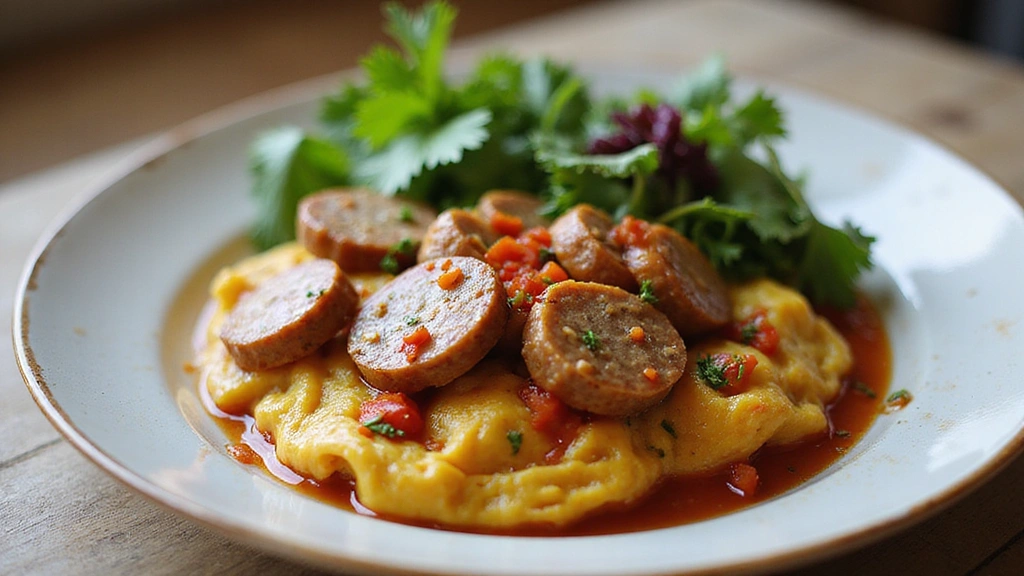Breakfast sausage is a beloved staple that adds savory depth to a variety of dishes.
Its rich, spicy flavor profile can elevate everything from casseroles to pasta.
I first fell in love with breakfast sausage during lazy Sunday brunches with family, where its aroma would fill the kitchen, promising a delicious meal ahead.
Whether you’re looking for a quick weekday dinner or a comforting weekend feast, these easy recipes that use breakfast sausage are sure to please everyone at the table.
The History and Cultural Significance
• Recipes that use breakfast sausage date back to the early 19th century, particularly in rural America, where sausage-making was a homegrown skill.
• As processing methods improved, breakfast sausage became more accessible and popular, evolving to include a variety of seasonings and forms.
• In the Southern United States, breakfast sausage is a beloved feature of brunch gatherings, symbolizing hospitality and comfort.
• While many variations exist, the classic breakfast sausage is characterized by its unique blend of spices, typically including sage and black pepper.
Recipe Overview
Nutritional Information (per serving)
Ingredients
Essential Equipment Guide
Skillet: A heavy-bottomed skillet is essential for achieving a perfect sear on the sausage, which locks in flavor. Look for a non-stick option for easy cleanup and heat distribution.
Mixing Bowl: A sturdy mixing bowl is necessary for combining ingredients, ensuring even distribution of flavors. Opt for a large bowl to accommodate all components comfortably.
Spatula: A good spatula is crucial for flipping sausage and mixing ingredients without damaging them. Silicone spatulas are ideal for non-stick cookware.
Preparation Methods
Crumbled Cooking: Crumbling the sausage into small pieces is essential for even cooking and flavor distribution. Use your fingers or a fork to break it apart in the skillet.
Sautéing Vegetables: Sautéing the vegetables before adding them to the dish helps to release their natural flavors. Cook until they are soft and slightly caramelized for the best taste.
Layering Flavors: Adding seasonings at different stages maximizes flavor. Start with the sausage, then add vegetables, and finally mix in cheese for a harmonious blend.
Step 1: Prepare Ingredients
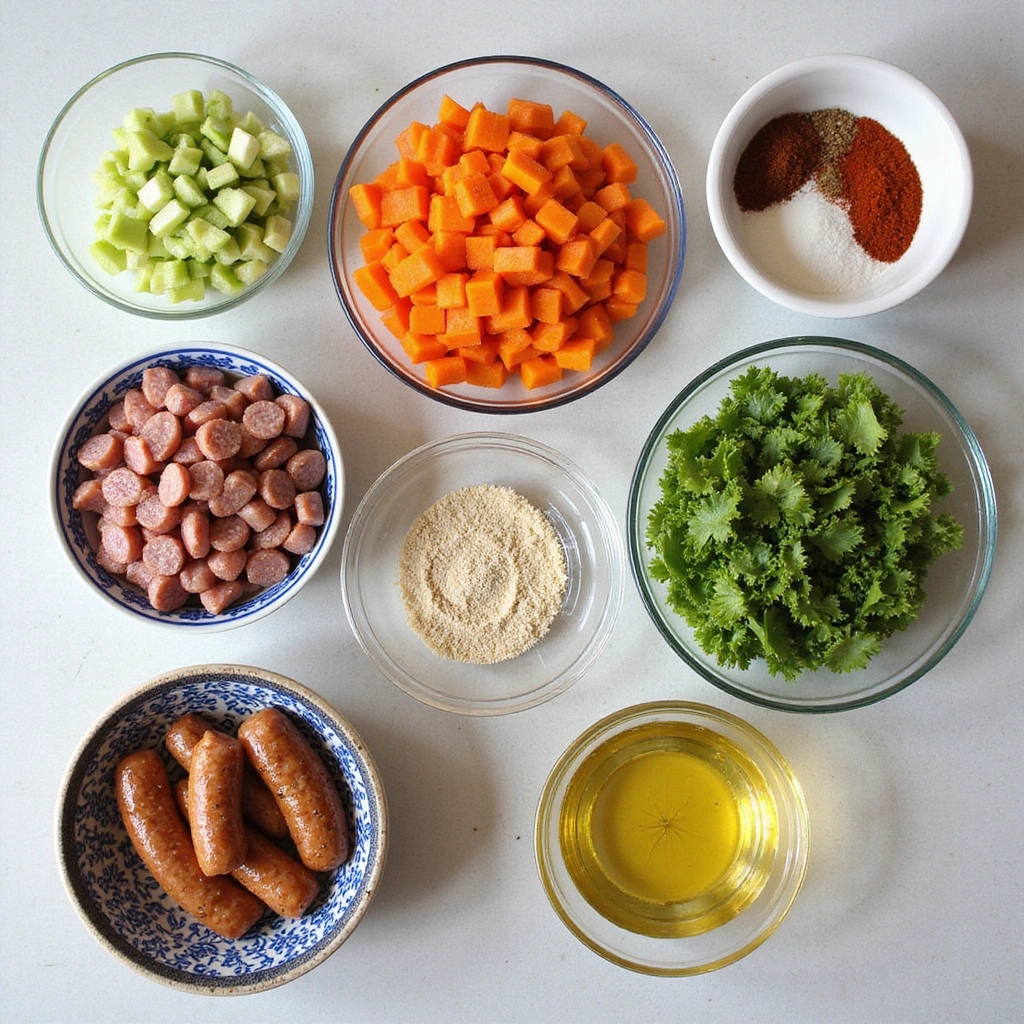
Gather all the ingredients listed.
Chop the bell pepper, onion, and spinach as directed.
Set them aside in bowls to streamline the cooking process.
Having everything prepped ensures a smoother workflow in the kitchen.
Step 2: Cook the Sausage

Heat a skillet over medium heat.
Add the crumbled breakfast sausage, breaking it up with a spatula as it cooks.
Cook until browned and no longer pink, about 8-10 minutes.
Ensure the sausage is cooked through for optimal flavor and safety.
Step 3: Sauté the Vegetables
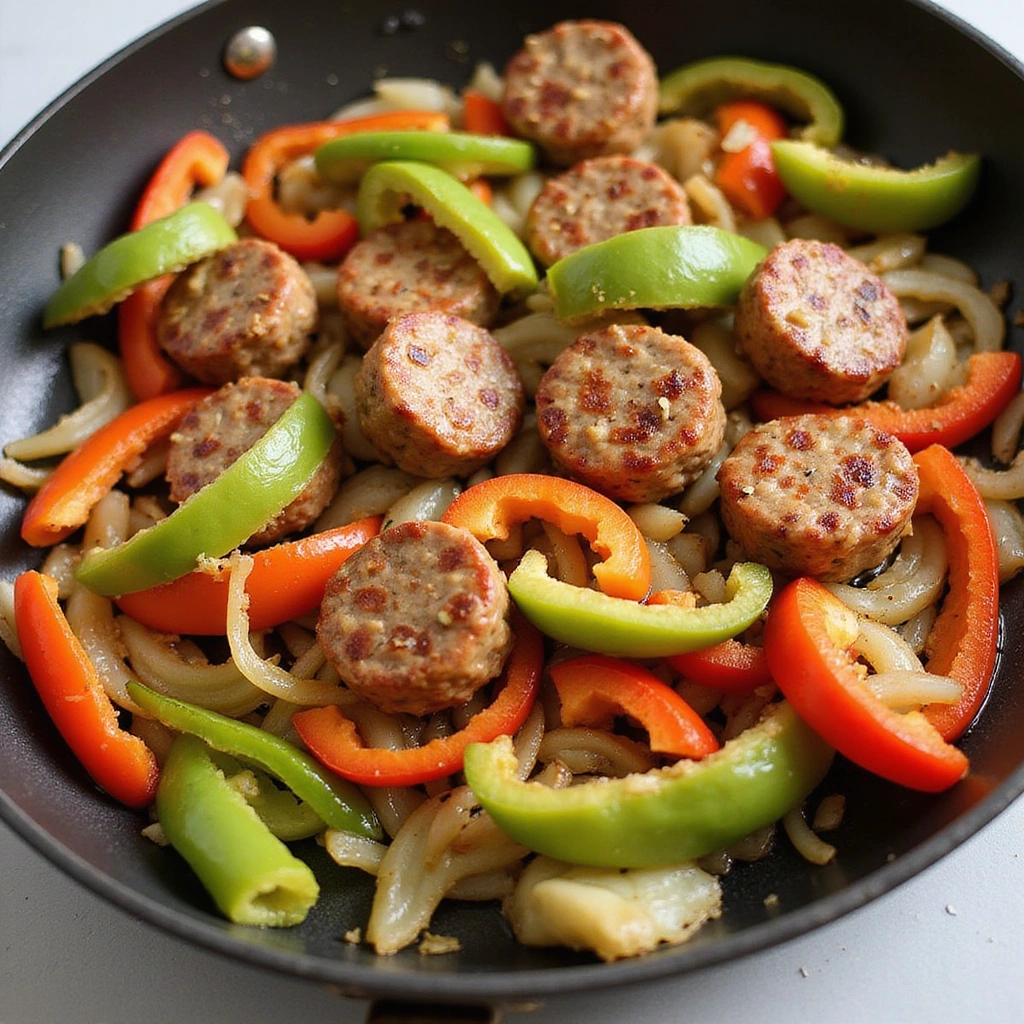
Once the sausage is fully cooked, add the chopped onion and bell pepper to the skillet.
Sauté for about 5 minutes until they are softened and fragrant.
Stir frequently to prevent sticking and ensure even cooking.
The vegetables should have a slight translucence when ready.
Step 4: Add Spinach
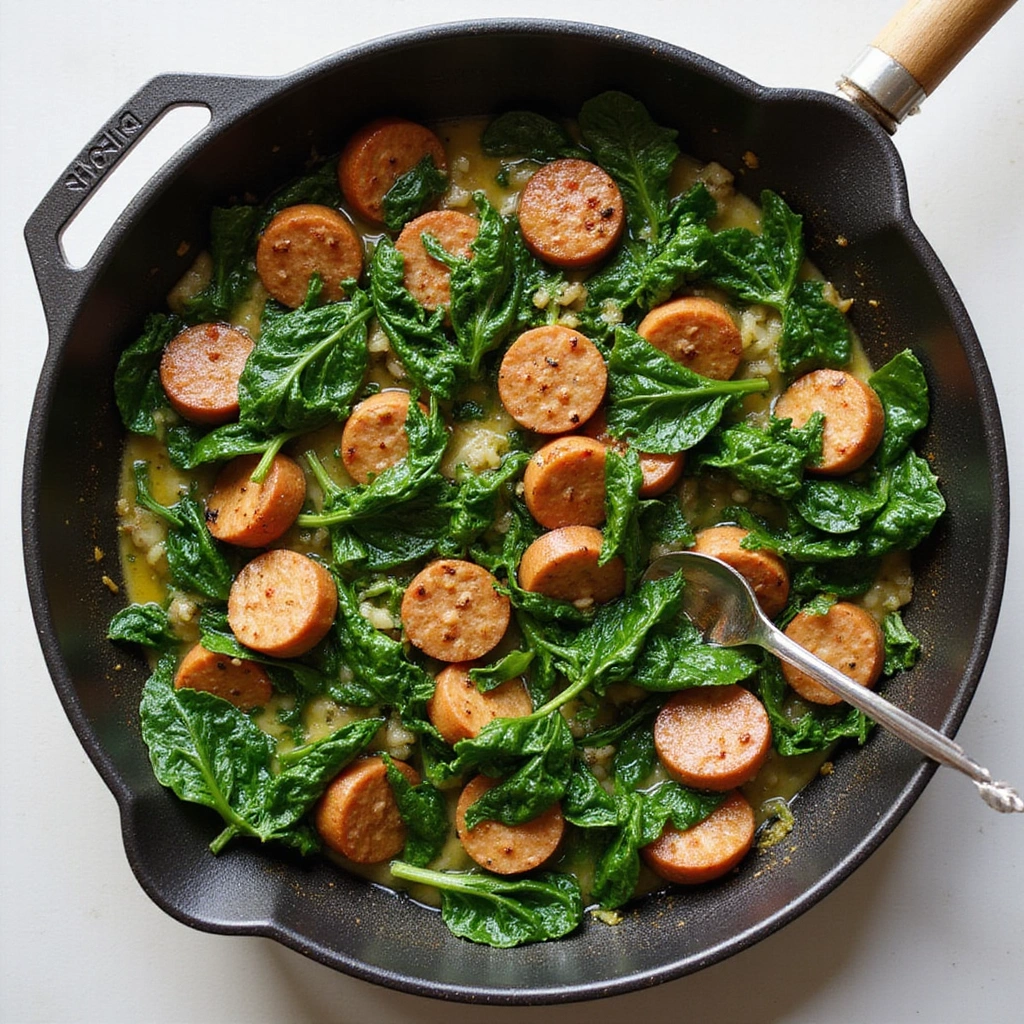
Stir in the fresh spinach and cook until wilted, about 2-3 minutes.
The spinach will reduce in size significantly.
Make sure to mix it well with the other ingredients.
This adds a nice color contrast and boosts the nutritional value.
Step 5: Season the Mixture
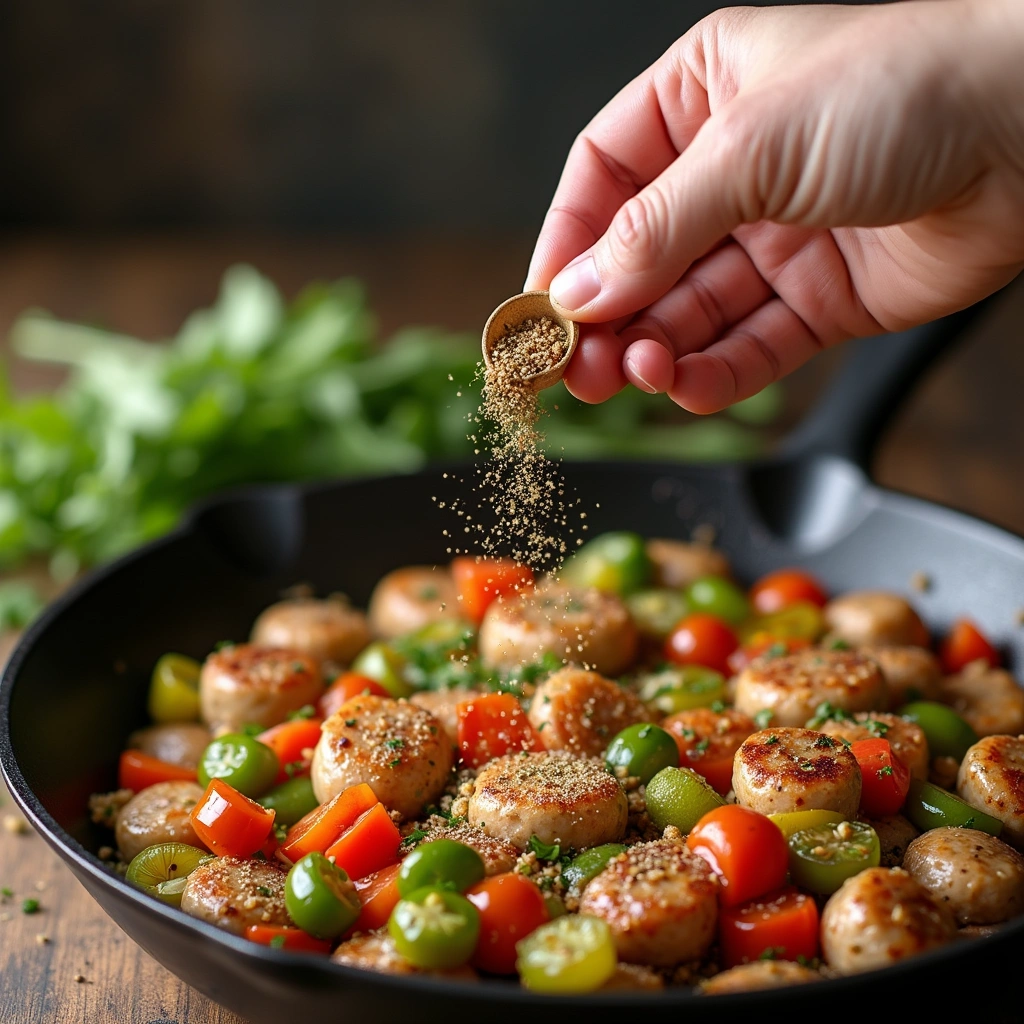
Sprinkle garlic powder, salt, and black pepper over the mixture.
Stir thoroughly to combine the seasonings evenly.
Taste and adjust any seasonings to your preference.
This step is crucial for building flavor.
Step 6: Add Cheese
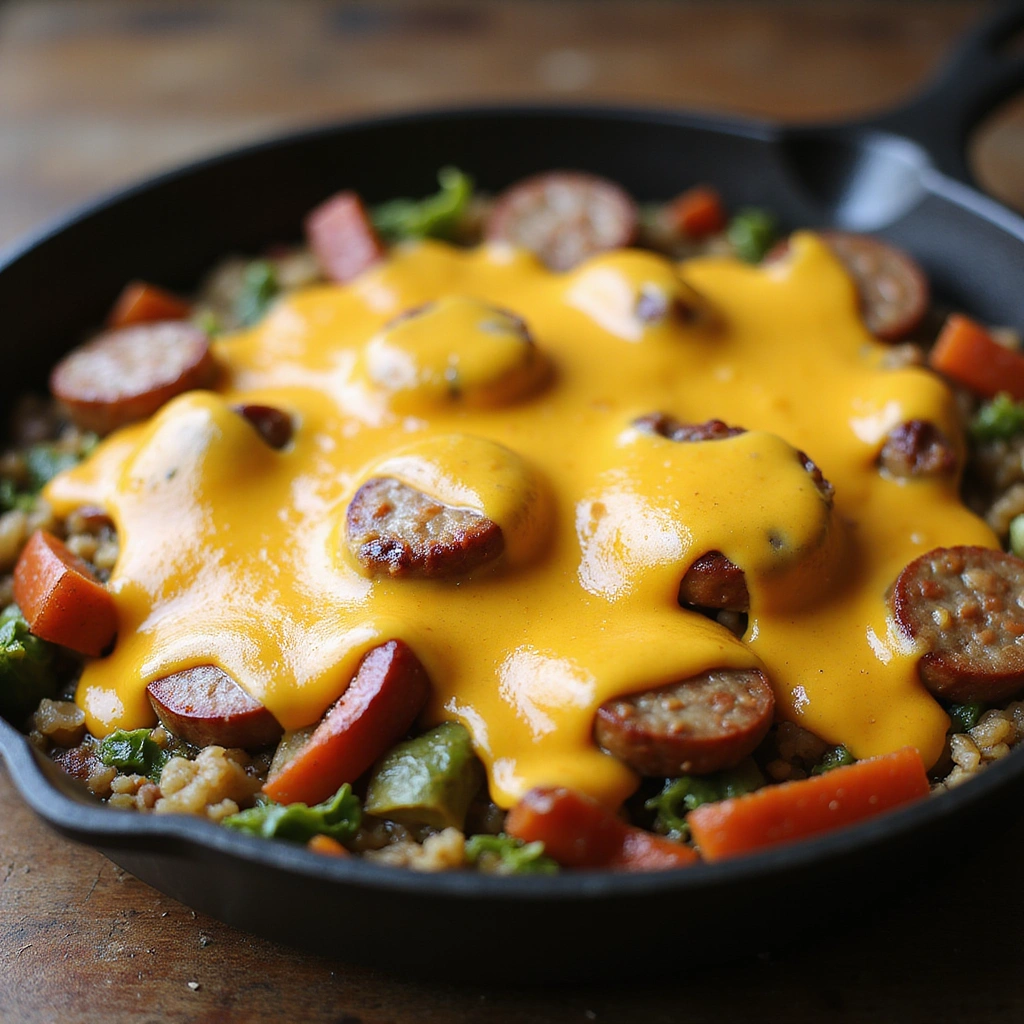
Reduce the heat to low and sprinkle shredded cheddar cheese over the mixture.
Cover the skillet and let it sit for a few minutes until the cheese melts.
Make sure the heat is low to prevent burning.
This creates a delicious cheesy layer that binds the ingredients together.
Step 7: Serve the Dish
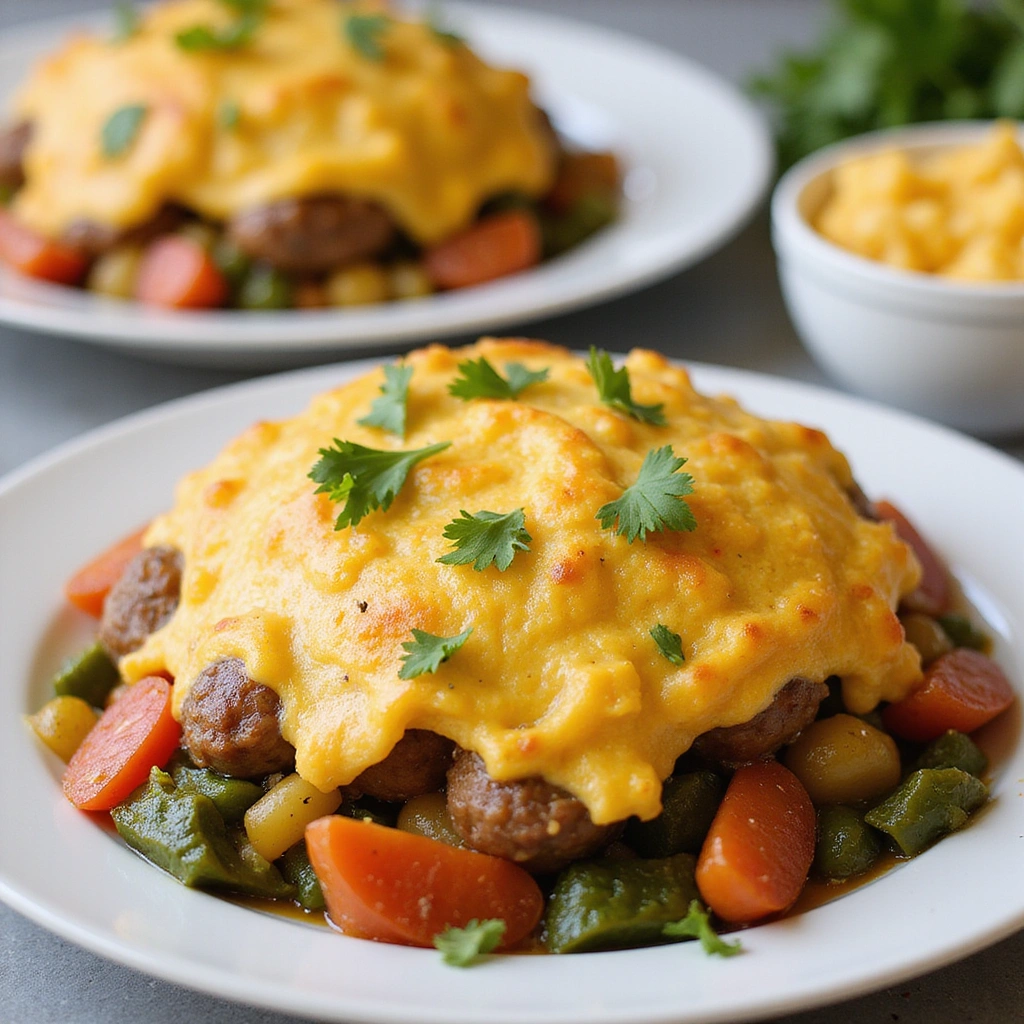
Remove the skillet from the heat and let it cool for a minute.
Scoop the mixture onto plates or into bowls.
Garnish with fresh herbs if desired for an added touch.
Serve hot for the best flavor experience.
Critical Timing and Temperature Guide
Cooking Sausage: Cook sausage over medium heat for 8-10 minutes until fully browned. Look for no pink spots; this indicates it’s cooked through. Avoid cooking on too high of heat to prevent burning.
Sautéing Vegetables: Sauté vegetables for about 5 minutes until soft. They should be translucent but not mushy. Stir frequently to ensure even cooking and prevent sticking.
Melted Cheese: Let cheese melt on low heat for about 2-3 minutes. It should be gooey and stretch when serving. Avoid high heat to prevent it from becoming tough.
Pro Tips for Recipes That Use Breakfast Sausage Easy And Delicious
• Ingredient Selection: Choosing high-quality breakfast sausage makes a significant difference. Look for sausage with natural spices and minimal fillers for the best flavor.
• Preparation Secret: Browning the sausage well enhances its flavor through the Maillard reaction, creating a depth that’s often overlooked.
• Temperature Management: Ensure your skillet is preheated before adding ingredients to achieve a good sear on the sausage.
• Texture Enhancement: Cooking vegetables until slightly caramelized adds a delightful sweetness that balances the dish.
• Flavor Layering: Incorporating spices at different stages of cooking builds a more complex flavor profile.
• Make-Ahead Strategies: You can prepare the sausage and vegetables in advance and store them in the refrigerator for up to 2 days, reheating before serving.
• Restaurant-Quality Finishing Touches: A sprinkle of fresh herbs or a drizzle of balsamic glaze right before serving elevates the dish’s presentation and flavor.
• Equipment Optimization: Using a cast-iron skillet helps achieve perfect browning and retains heat well during cooking.
Troubleshooting Common Issues
• Flavor Too Bland: This can occur if seasonings are added too late. Always taste as you go and adjust seasonings early in the cooking process to build flavor.
• Texture Too Greasy: If your dish is oily, it may be from using a fatty sausage. Try using leaner sausage or draining excess fat after cooking.
• Vegetables Overcooked: If vegetables turn mushy, reduce cooking time or add them later in the process. They should be tender but still hold their shape.
• Cheese Not Melting: Ensure you’re using a cheese that melts well, like cheddar. If cooking on high heat, it may become tough instead of gooey.
• Dish Too Salty: If you’ve added too much salt, balance it with a touch of sugar or add more unseasoned vegetables to dilute the saltiness.
Variations and Regional Differences
• Southern Style: In the Southern U.S., adding a touch of cayenne pepper gives the dish a spicy kick, reflecting the region’s love for bold flavors.
• Italian Twist: Incorporating Italian herbs like oregano and basil, along with marinara sauce, creates a delicious Italian-inspired version.
• Vegetarian Option: Use plant-based breakfast sausage for a vegetarian alternative that still captures the savory essence of the original recipe.
• Modern Interpretations: Consider adding ingredients like quinoa or sweet potatoes for a health-conscious twist that maintains the dish’s comforting roots.
Food Science Behind the Recipe
• Maillard Reaction: This chemical reaction occurs when proteins and sugars in the sausage are heated, creating rich flavors and color. This is why browning the sausage is crucial for taste.
• Emulsification: When cooking sausage, fat renders and mixes with water, creating a flavorful, moist texture. Understanding this helps in choosing the right sausage for the best results.
• Caramelization: When vegetables are sautéed, their natural sugars caramelize, enhancing sweetness and flavor complexity. This process is key to achieving a balanced taste.
Frequently Asked Questions
What’s the most common mistake people make when preparing recipes that use breakfast sausage? Many forget to season properly, leading to bland dishes. Always taste and adjust seasonings throughout the cooking process.
Can I prepare components of this dish in advance? Yes, you can cook the sausage and vegetables a day ahead. Store them separately in airtight containers in the fridge and reheat before serving.
How do I adapt this recipe for dietary restrictions? For gluten-free options, ensure the sausage is gluten-free and use gluten-free cheese. Substitute with veggies for a lower-carb version.
What’s the best way to store and reheat leftovers? Store leftovers in an airtight container in the fridge for up to 3 days. Reheat gently in a skillet over low heat, stirring occasionally.
Can I freeze this dish? Yes, freeze the cooked mixture in an airtight container for up to 2 months. Thaw in the fridge overnight and reheat thoroughly.
What wine or beverages pair best with this dish? A light-bodied red wine like Pinot Noir complements the dish’s flavors well. For non-alcoholic options, consider a sparkling water with lemon.
How can I scale this recipe up for a crowd? Simply multiply the ingredients by the number of servings you need, keeping an eye on cooking times as larger batches may require adjustments.
What side dishes complement this recipe best? Consider pairing with a fresh mixed salad or roasted potatoes for a well-rounded meal.
How do professional chefs elevate this dish for restaurant service? Chefs often use high-quality artisanal sausages and incorporate seasonal vegetables, presenting the dish with decorative garnishes.
Serving and Presentation Guide
• Traditional Presentation: Serve the sausage mixture in a rustic cast-iron skillet, garnished with fresh herbs for a homely feel.
• Modern Plating Ideas: Use a white plate to contrast the colorful ingredients, stacking them in a tower for a more sophisticated look.
• Accompaniment Suggestions: Pair with a side of fluffy scrambled eggs or crispy hash browns to complement the flavors.
• Special Occasion Presentation: For celebrations, serve in individual ramekins topped with a sprinkle of microgreens or edible flowers for an elegant touch.
Conclusion
I hope you find joy in preparing these easy recipes that use breakfast sausage.
Each dish brings warmth and comfort to the table, perfect for sharing with loved ones.
Enjoy the delightful flavors and the memories you’ll create around this versatile ingredient.
